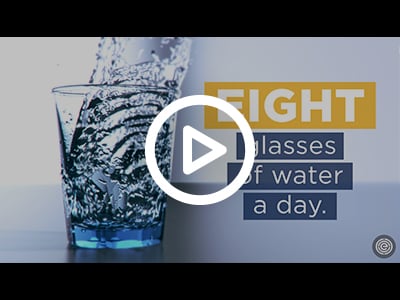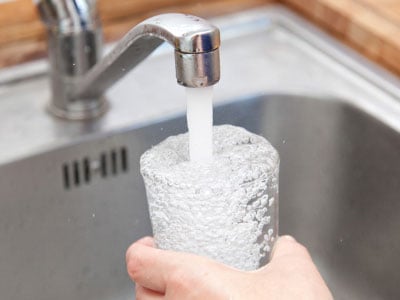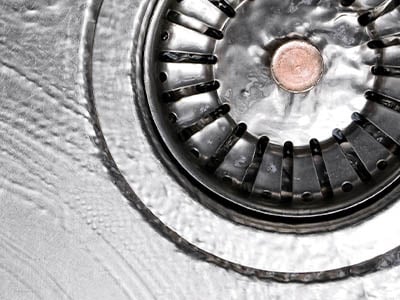Town of Berwick
EWG's drinking water quality report shows results of tests conducted by the water utility and provided to the Environmental Working Group by the Louisiana Department of Health and Hospitals, as well as information from the U.S. EPA Enforcement and Compliance History database (ECHO). For the latest quarter assessed by the U.S. EPA (January 2021 - March 2021), tap water provided by this water utility was in compliance with federal health-based drinking water standards.
Utility Details
- Berwick, Louisiana
- Serves: 4,430
- Data available: 2014-2019
- Source: Purchased surface water
Contaminants Detected
11
EXCEED
EWG HEALTH
GUIDELINES
26 Total Contaminants
- Legal does not necessarily equal safe. Getting a passing grade from the federal government does not mean the water meets the latest health guidelines.
- Legal limits for contaminants in tap water have not been updated in almost 20 years.
- The best way to ensure clean tap water is to keep pollution out of source water in the first place.
Looking for a countertop water filter?
Find out which filters earned EWG's recommendation
See the guideContaminants Detected
Arsenic*
Potential Effect: cancer73x EWG'S HEALTH GUIDELINEArsenic
more aboutthis contaminant
Arsenic is a potent carcinogen and common contaminant in drinking water. Arsenic causes thousands of cases of cancer each year in the U.S. Click here to read more about arsenic.
Arsenic was found at 73 times above EWG's Health Guideline.
EWG Health Guideline
This Utility
Legal Limit
National Average
State Average
ppb = parts per billion
Health Risks
The EWG Health Guideline of 0.004 ppb for arsenic was defined by the California Office of Environmental Health Hazard Assessment as a public health goal, the level of a drinking water contaminant that does not pose a significant health risk. This health guideline protects against cancer.
Pollution Sources

Agriculture

Industry

Naturally Occurring
Filtering Options
Reverse Osmosis
Ion Exchange
Bromodichloromethane
Potential Effect: cancer162x EWG'S HEALTH GUIDELINEBromodichloromethane
more aboutthis contaminant
Bromodichloromethane, one of the total trihalomethanes (TTHMs), is formed when chlorine or other disinfectants are used to treat drinking water. Bromodichloromethane and other disinfection byproducts increase the risk of cancer and may cause problems during pregnancy. Click here to read more about disinfection byproducts.
Bromodichloromethane was found at 162 times above EWG's Health Guideline.
EWG Health Guideline
This Utility
National Average
State Average
ppb = parts per billion
Health Risks
The EWG Health Guideline of 0.06 ppb for bromodichloromethane was proposed in 2018 by the California Office of Environmental Health Hazard Assessment as a one-in-a-million lifetime risk of cancer. Values greater than one-in-a-million cancer risk level can result in increased cancer cases above one in a million people.
Pollution Sources
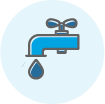
Treatment Byproducts
Filtering Options
Activated Carbon
Reverse Osmosis
Chloroform
Potential Effect: cancer55x EWG'S HEALTH GUIDELINEChloroform
more aboutthis contaminant
Chloroform, one of the total trihalomethanes (TTHMs), is formed when chlorine or other disinfectants are used to treat drinking water. Chloroform and other disinfection byproducts increase the risk of cancer and may cause problems during pregnancy.
Chloroform was found at 55 times above EWG's Health Guideline.
EWG Health Guideline
This Utility
National Average
State Average
ppb = parts per billion
Health Risks
The EWG Health Guideline of 0.4 ppb for chloroform was proposed in 2018 by the California Office of Environmental Health Hazard Assessment as a one-in-a-million lifetime risk of cancer. Values greater than one-in-a-million cancer risk level can result in increased cancer cases above one in a million people.
Pollution Sources

Treatment Byproducts
Filtering Options
Activated Carbon
Reverse Osmosis
Dibromoacetic acid
Potential Effect: 32x EWG'S HEALTH GUIDELINEDibromoacetic acid
more aboutthis contaminant
Dibromoacetic acid, one of the group of five haloacetic acids regulated by federal standards, is formed when chlorine or other disinfectants are used to treat drinking water. Haloacetic acids and other disinfection byproducts increase the risk of cancer and may cause problems during pregnancy. Click here to read more about disinfection byproducts.
Dibromoacetic acid was found at 32 times above EWG's Health Guideline.
EWG Health Guideline
This Utility
National Average
State Average
ppb = parts per billion
Health Risks
The EWG Health Guideline of 0.04 ppb for dibromoacetic acid was defined in a peer-reviewed scientific study by EWG and represents a on-in-a-million lifetime cancer risk level. This health guideline protects against cancer.
Pollution Sources

Treatment Byproducts
Filtering Options
Activated Carbon
Reverse Osmosis
Dibromochloromethane
Potential Effect: cancer29x EWG'S HEALTH GUIDELINEDibromochloromethane
more aboutthis contaminant
Dibromochloromethane, one of the total trihalomethanes (TTHMs), is formed when chlorine or other disinfectants are used to treat drinking water. Dibromochloromethane and other disinfection byproducts increase the risk of cancer and may cause problems during pregnancy. Click here to read more about disinfection byproducts.
Dibromochloromethane was found at 29 times above EWG's Health Guideline.
EWG Health Guideline
This Utility
National Average
State Average
ppb = parts per billion
Health Risks
The EWG Health Guideline of 0.1 ppb for dibromochloromethane was proposed in 2018 by the California Office of Environmental Health Hazard Assessment as a one-in-a-million lifetime risk of cancer. Values greater than one-in-a-million cancer risk level can result in increased cancer cases above one in a million people.
Pollution Sources

Treatment Byproducts
Filtering Options
Activated Carbon
Reverse Osmosis
Dichloroacetic acid
Potential Effect: cancer62x EWG'S HEALTH GUIDELINEDichloroacetic acid
more aboutthis contaminant
Dichloroacetic acid, one of the group of five haloacetic acids regulated by federal standards, is formed when chlorine or other disinfectants are used to treat drinking water. Haloacetic acids and other disinfection byproducts increase the risk of cancer and may cause problems during pregnancy. Click here to read more about disinfection byproducts.
Dichloroacetic acid was found at 62 times above EWG's Health Guideline.
EWG Health Guideline
This Utility
National Average
State Average
ppb = parts per billion
Health Risks
The EWG Health Guideline of 0.2 ppb for dichloroacetic acid was proposed in 2020 by the California Office of Environmental Health Hazard Assessment as a public health goal, the level of a drinking water contaminant that does not pose a significant health risk.a one-in-a-million lifetime risk of cancer. Values greater than one-in-a-million cancer risk level can result in increased cancer cases above one in a million people.
Pollution Sources

Treatment Byproducts
Filtering Options
Activated Carbon
Reverse Osmosis
Haloacetic acids (HAA5)†
Potential Effect: cancer229x EWG'S HEALTH GUIDELINEHaloacetic acids (HAA5)
more aboutthis contaminant
Haloacetic acids are formed when disinfectants such as chlorine are added to tap water. The group of five haloacetic acids regulated by federal standards includes monochloroacetic acid, dichloroacetic acid, trichloroacetic acid, monobromoacetic acid and dibromoacetic acid.
Haloacetic acids (HAA5) was found at 229 times above EWG's Health Guideline.
EWG Health Guideline
This Utility
Legal Limit
National Average
State Average
ppb = parts per billion
Health Risks
The EWG Health Guideline of 0.1 ppb for the group of five haloacetic acids, or HAA5, was defined in a peer-reviewed scientific study by EWG and represents a one-in-a-million lifetime cancer risk level. This health guideline protects against cancer.
Pollution Sources

Treatment Byproducts
Filtering Options
Activated Carbon
Reverse Osmosis
Nitrate and nitrite*
Potential Effect: cancer5.7x EWG'S HEALTH GUIDELINENitrate and nitrite
more aboutthis contaminant
Nitrate and nitrite enter water from fertilizer runoff, septic tanks and urban runoff. These contaminants can cause oxygen deprivation for infants and increase the risk of cancer. Nitrite is significantly more toxic than nitrate. Click here to read more about nitrate.
Nitrate and nitrite was found at 5.7 times above EWG's Health Guideline.
EWG Health Guideline
This Utility
Legal Limit
National Average
State Average
ppm = parts per million
Health Risks
The health guideline of 0.14 parts per million, or ppm, for nitrate and nitrite is based on the equivalent health guideline for nitrate, as defined in a peer-reviewed scientific study by EWG. This guideline represents a one-in-one-million annual cancer risk level.Pollution Sources

Agriculture

Runoff & Sprawl

Naturally Occurring
Filtering Options
Reverse Osmosis
Ion Exchange
Radium, combined (-226 & -228)*
Potential Effect: cancer8.5x EWG'S HEALTH GUIDELINERadium, combined (-226 & -228)
more aboutthis contaminant
Radium is a radioactive element that causes bone cancer and other cancers. It can occur naturally in groundwater, and oil and gas extraction activities such as hydraulic fracturing can elevate concentrations.
Radium, combined (-226 & -228) was found at 8.5 times above EWG's Health Guideline.
EWG Health Guideline
This Utility
Legal Limit
National Average
State Average
pCi/L = picocuries per liter
Health Risks
EWG applied the health guideline of 0.05 pCi/L, defined by the California Office of Environmental Health Hazard Assessment as a public health goal for radium-226, to radium-226 and radium-228 combined. This health guideline protects against cancer.Pollution Sources

Industry

Naturally Occurring
Filtering Options
Reverse Osmosis
Ion Exchange
Total trihalomethanes (TTHMs)†
Potential Effect: cancer231x EWG'S HEALTH GUIDELINETotal trihalomethanes (TTHMs)
more aboutthis contaminant
Trihalomethanes are cancer-causing contaminants that form during water treatment with chlorine and other disinfectants. The total trihalomethanes group includes four chemicals: chloroform, bromodichloromethane, dibromochloromethane and bromoform.
Total trihalomethanes (TTHMs) was found at 231 times above EWG's Health Guideline.
EWG Health Guideline
This Utility
Legal Limit
National Average
State Average
ppb = parts per billion
Health Risks
The health guideline of 0.15 parts per billion, or ppb, for the group of four trihalomethanes, or THM4/TTHM, was defined in a peer-reviewed scientific study by EWG and represents a one-in-one-million lifetime cancer risk level.Pollution Sources

Treatment Byproducts
Filtering Options
Activated Carbon
Reverse Osmosis
Trichloroacetic acid
Potential Effect: cancer84x EWG'S HEALTH GUIDELINETrichloroacetic acid
more aboutthis contaminant
Trichloroacetic acid, one of the group of five haloacetic acids regulated by federal standards, is formed when chlorine or other disinfectants are used to treat drinking water. Haloacetic acids and other disinfection byproducts increase the risk of cancer and may cause problems during pregnancy. Click here to read more about disinfection byproducts.
Trichloroacetic acid was found at 84 times above EWG's Health Guideline.
EWG Health Guideline
This Utility
National Average
State Average
ppb = parts per billion
Health Risks
The EWG Health Guideline of 0.1 ppb for trichloroacetic acid was proposed in 2020 by the California Office of Environmental Health Hazard Assessment as a public health goal, the level of a drinking water contaminant that does not pose a significant health risk.a one-in-a-million lifetime risk of cancer. Values greater than one-in-a-million cancer risk level can result in increased cancer cases above one in a million people.
Pollution Sources

Treatment Byproducts
Filtering Options
Activated Carbon
Reverse Osmosis
Includes chemicals detected in 2017-2019 for which annual utility averages exceeded an EWG-selected health guideline established by a federal or state public health authority; radiological contaminants detected between 2014 and 2019.
*This water utility buys or otherwise receives some or all of its finished water from Berwick Bayou Vista Water Works Commission. Tap water results marked with an * are from the supplying utility.
† HAA5 is a contaminant group that includes monochloroacetic acid, dichloroacetic acid, trichloroacetic acid, monobromoacetic acid and dibromoacetic acid. HAA9 is a contaminant group that includes the chemicals in HAA5 and bromochloroacetic acid, bromodichloroacetic acid, chlorodibromoacetic acid and tribromoacetic acid. TTHM is a contaminant group that includes bromodichloromethane, bromoform, chloroform and dibromochloromethane.
1,2,4-Trichlorobenzene
more aboutthis contaminant
1,2,4-Trichlorobenzene is an industrial solvent that can harm the adrenal glands and may increase the risk of cancer.
How your levels compare
EWG Health Guideline
This Utility
Legal Limit
National Average
State Average
ppb = parts per billion
Health Risks
The EWG Health Guideline of 5 ppb for 1,2,4-trichlorobenzene was defined by the California Office of Environmental Health Hazard Assessment as a public health goal, the level of a drinking water contaminant that does not pose a significant health risk. This health guideline protects against hormone disruption.
Pollution Sources

Industry
Filtering Options
Activated Carbon
Reverse Osmosis
Aluminum
more aboutthis contaminant
Aluminum is a metal released from metal refineries and mining operations. Too much aluminum exposure can impair children's brain development.
How your levels compare
EWG Health Guideline
This Utility
National Average
State Average
ppb = parts per billion
Health Risks
The EWG Health Guideline of 600 ppb for aluminum was defined by the California Office of Environmental Health Hazard Assessment as a public health goal, the level of a drinking water contaminant that does not pose a significant health risk. This health guideline protects against harm to the brain and nervous system.
Pollution Sources

Industry

Naturally Occurring
Filtering Options
Reverse Osmosis
Atrazine
more aboutthis contaminant
Atrazine is a herbicide commonly detected in drinking water that comes from cornfield and other agricultural runoff. It is a hormone disrupter that harms the male and female reproductive systems of people and wildlife.
How your levels compare
EWG Health Guideline
This Utility
Legal Limit
National Average
State Average
ppb = parts per billion
Health Risks
The EWG Health Guideline of 0.1 ppb for atrazine was defined by EWG based on epidemiological studies of human exposure to atrazine in drinking water.. This health guideline protects against harm to the developing fetus, harm to the reproductive system and hormone disruption.
Pollution Sources

Agriculture
Filtering Options
Activated Carbon
Reverse Osmosis
Barium is a mineral present in rocks, soil and water. High concentrations of barium in drinking water increase the risk of cardiovascular disease and hypertension.
How your levels compare
EWG Health Guideline
This Utility
Legal Limit
National Average
State Average
ppb = parts per billion
Health Risks
The EWG Health Guideline of 700 ppb for barium was defined by EWG as benchmark that protects against harm to the kidneys and the cardiovascular system.
Pollution Sources

Industry

Naturally Occurring
Filtering Options
Reverse Osmosis
Ion Exchange
Bromoform
more aboutthis contaminant
Bromoform, one of the total trihalomethanes (TTHMs), is formed when chlorine or other disinfectants are used to treat drinking water. Bromoform and other disinfection byproducts increase the risk of cancer and may cause problems during pregnancy. Click here to read more about disinfection byproducts.
How your levels compare
EWG Health Guideline
This Utility
National Average
State Average
ppb = parts per billion
Health Risks
The EWG Health Guideline of 0.5 ppb for bromoform was proposed in 2018 by the California Office of Environmental Health Hazard Assessment as a one-in-a-million lifetime risk of cancer. Values greater than one-in-a-million cancer risk level can result in increased cancer cases above one in a million people.
Pollution Sources

Treatment Byproducts
Filtering Options
Activated Carbon
Reverse Osmosis
Cyanide
more aboutthis contaminant
Cyanide is a toxic chemical that causes central nervous system and thyroid toxicity. Water contamination is generally the result of metal mining and chemical industry waste, runoff from agriculture and road salts used for melting ice.
How your levels compare
This Utility
Legal Limit
National Average
State Average
ppb = parts per billion
Pollution Sources

Agriculture

Industry

Runoff & Sprawl

Naturally Occurring
Filtering Options
Reverse Osmosis
Ion Exchange
Dalapon
more aboutthis contaminant
The herbicide dalapon has not been used in the U.S. since 1999. In animal studies, exposure to dalapon harms the kidneys.
How your levels compare
This Utility
Legal Limit
National Average
State Average
ppb = parts per billion
Pollution Sources

Agriculture

Runoff & Sprawl
Filtering Options
Activated Carbon
Reverse Osmosis
Di(2-ethylhexyl) phthalate
more aboutthis contaminant
Di(2-ethylhexyl) phthalate, or DEHP, is a softener added to PVC plastics. Phthalates are hormone disruptors that target the male reproductive system.
How your levels compare
EWG Health Guideline
This Utility
Legal Limit
National Average
State Average
ppb = parts per billion
Health Risks
The EWG Health Guideline of 3 ppb for di(2-ethylhexyl) phthalate was defined by the Environmental Protection Agency as a one-in-a-million lifetime risk of cancer. Values greater than one-in-a-million cancer risk level can result in increased cancer cases above one in a million people.
Pollution Sources

Industry

Runoff & Sprawl
Filtering Options
Activated Carbon
Reverse Osmosis
Endrin is a banned organochlorine insecticide that is persistent and bioaccumulative. Endrin damages the nervous, immune and reproductive systems in people. It also harms fish, birds and other wildlife.
How your levels compare
EWG Health Guideline
This Utility
Legal Limit
National Average
State Average
ppb = parts per billion
Health Risks
The EWG Health Guideline of 0.3 ppb for endrin was defined by the California Office of Environmental Health Hazard Assessment as a public health goal, the level of a drinking water contaminant that does not pose a significant health risk. This health guideline protects against change to the heart and blood vessels.
Pollution Sources

Agriculture
Filtering Options
Activated Carbon
Reverse Osmosis
Fluoride
more aboutthis contaminant
Fluoride occurs naturally in surface and groundwater and is also added to drinking water by many water systems.
How your levels compare
This Utility
Legal Limit
National Average
State Average
ppm = parts per million
Pollution Sources

Treatment Byproducts
Filtering Options
Reverse Osmosis
Monobromoacetic acid
more aboutthis contaminant
Monobromoacetic acid, one of the group of five haloacetic acids regulated by federal standards, is formed when chlorine or other disinfectants are used to treat drinking water. Haloacetic acids and other disinfection byproducts increase the risk of cancer and may cause problems during pregnancy. Click here to read more about disinfection byproducts.
How your levels compare
EWG Health Guideline
This Utility
National Average
State Average
ppb = parts per billion
Health Risks
The EWG Health Guideline of 25 ppb for monobromoacetic acid was proposed in 2020 by the California Office of Environmental Health Hazard Assessment as a public health goal, the level of a drinking water contaminant that does not pose a significant health risk.. This health guideline protects against muscular degeneration.
Pollution Sources

Treatment Byproducts
Filtering Options
Activated Carbon
Reverse Osmosis
Monochloroacetic acid
more aboutthis contaminant
Monochloroacetic acid, one of the group of five haloacetic acids regulated by federal standards, is formed when chlorine or other disinfectants are used to treat drinking water. Haloacetic acids and other disinfection byproducts increase the risk of cancer and may cause problems during pregnancy. Click here to read more about disinfection byproducts.
How your levels compare
EWG Health Guideline
This Utility
National Average
State Average
ppb = parts per billion
Health Risks
The EWG Health Guideline of 53 ppb for monochloroacetic acid was proposed in 2020 by the California Office of Environmental Health Hazard Assessment as a public health goal, the level of a drinking water contaminant that does not pose a significant health risk.. This health guideline protects against system toxicity.
Pollution Sources

Treatment Byproducts
Filtering Options
Activated Carbon
Reverse Osmosis
o-Dichlorobenzene
more aboutthis contaminant
o-Dichlorobenzene is used as a chemical intermediate for making agricultural herbicides. It is toxic to the liver, kidneys and the nervous system, and causes cancer in animal studies.
How your levels compare
EWG Health Guideline
This Utility
Legal Limit
National Average
State Average
ppb = parts per billion
Health Risks
The EWG Health Guideline of 600 ppb for o-dichlorobenzene was defined by the California Office of Environmental Health Hazard Assessment as a public health goal, the level of a drinking water contaminant that does not pose a significant health risk. This health guideline protects against harm to internal organs.
Pollution Sources

Industry
Filtering Options
Activated Carbon
Reverse Osmosis
p-Dichlorobenzene
more aboutthis contaminant
p-Dichlorobenzene is a carcinogenic insecticide used in mothballs, and added to deodorant blocks made for trash cans and toilets. Long-term exposure can cause liver damage and kidney problems.
How your levels compare
EWG Health Guideline
This Utility
Legal Limit
National Average
State Average
ppb = parts per billion
Health Risks
The EWG Health Guideline of 6 ppb for p-dichlorobenzene was defined by the California Office of Environmental Health Hazard Assessment as a public health goal, the level of a drinking water contaminant that does not pose a significant health risk. This health guideline protects against cancer.
Pollution Sources

Agriculture

Industry

Runoff & Sprawl
Filtering Options
Activated Carbon
Reverse Osmosis
Selenium
more aboutthis contaminant
Selenium is an essential element in diets. But too much selenium can decrease thyroid hormone production and cause hair loss, skin lesions and brittle fingernails.
How your levels compare
EWG Health Guideline
This Utility
Legal Limit
National Average
State Average
ppb = parts per billion
Health Risks
The EWG Health Guideline of 30 ppb for selenium was defined by the California Office of Environmental Health Hazard Assessment as a public health goal, the level of a drinking water contaminant that does not pose a significant health risk. This health guideline protects against hair loss and nail damage.
Pollution Sources

Industry

Naturally Occurring
Filtering Options
Reverse Osmosis
Includes chemicals detected in 2017-2019 for which annual utility averages were lower than an EWG-selected health guideline established by a federal or state public health authori.
Town of Berwick compliance with legally mandated federal standards:
- From April 2019 to March 2021, Town of Berwick complied with health-based drinking water standards.
- 2 QUARTERSin violation of any federal drinking water standard from April 2019 to March 2021
Information in this section on Town of Berwick comes from the U.S. EPA Enforcement and Compliance History Online database (ECHO).
LEARN MORE ABOUT THIS UTILITYWater Filters That Can Reduce Contaminant Levels
| Contaminant | Activated Carbon | Reverse Osmosis | Ion Exchange |
| CONTAMINANTS ABOVE HEALTH GUIDELINES | |||
| Arsenic | ✔ | ✔ | |
| Bromodichloromethane | ✔ | ✔ | |
| Chloroform | ✔ | ✔ | |
| Dibromoacetic acid | ✔ | ✔ | |
| Dibromochloromethane | ✔ | ✔ | |
| Dichloroacetic acid | ✔ | ✔ | |
| Haloacetic acids (HAA5) | ✔ | ✔ | |
| Nitrate & nitrite | ✔ | ✔ | |
| Radium, combined (-226 & -228) | ✔ | ✔ | |
| Total trihalomethanes (TTHMs) | ✔ | ✔ | |
| Trichloroacetic acid | ✔ | ✔ | |
| OTHER CONTAMINANTS DETECTED | |||
| 1,2,4-Trichlorobenzene | ✔ | ✔ | |
| Aluminum | ✔ | ||
| Atrazine | ✔ | ✔ | |
| Barium | ✔ | ✔ | |
| Bromoform | ✔ | ✔ | |
| Cyanide | ✔ | ✔ | |
| Dalapon | ✔ | ✔ | |
| Di(2-ethylhexyl) phthalate | ✔ | ✔ | |
| Endrin | ✔ | ✔ | |
| Fluoride | ✔ | ||
| Monobromoacetic acid | ✔ | ✔ | |
| Monochloroacetic acid | ✔ | ✔ | |
| o-Dichlorobenzene | ✔ | ✔ | |
| p-Dichlorobenzene | ✔ | ✔ | |
| Selenium | ✔ | ||
Take Action
Contact Your Local Official
One of the best ways to push for cleaner water is to hold accountable the elected officials who have a say in water quality – from city hall and the state legislature to Congress all the way to the Oval Office – by asking questions and demanding answers.
LEARN MOREFilter Out Contaminants
Check out our recommendations for filters to protect your water against the detected contaminants.
EWG’S WATER FILTER GUIDE